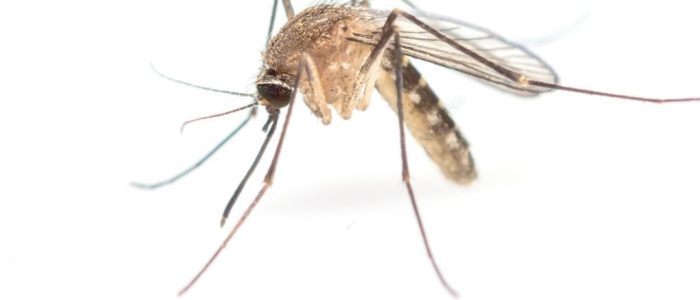A Guide to Mosquito Species in Orange County, NY (and How to Handle Them)
Mosquitoes are more than just a nuisance; they’re a real health concern and a part of life in certain regions, including Orange County, NY. If you’ve been swatting away these persistent insects, you might be asking yourself, “What kind of mosquitoes are in my area, and what can I do about them?”
This guide dives into the different mosquito species found in Orange County, their behaviors, the potential health risks they pose, and practical tips for managing them effectively.
What You Should Know About Mosquitoes in Orange County, NY
Mosquitoes thrive in warm, humid environments, and Orange County has the right mix of conditions to make it a hotspot for various species. Though they’re most active from late spring to early fall, certain species can survive beyond this period if conditions stay favorable.
While more than 60 mosquito species exist in New York State, Orange County is home to a handful of key players. Understanding their behavior and breeding habits is the first step toward protecting yourself and your community.
Why Identifying Mosquito Species Matters
Not all mosquitoes are created equal. Knowing the specific types of mosquitoes in your area can help you:
- Identify potential health risks since some mosquitoes carry serious diseases like West Nile virus or Eastern Equine Encephalitis (EEE).
- Develop targeted prevention strategies since different species have unique habits and breeding grounds.
- Use resources efficiently by focusing on the most common and dangerous species.
Now, on to the species most likely to cross your path in Orange County.
Common Mosquito Species in Orange County, NY
1. Culex pipiens (Northern House Mosquito)
Culex pipiens is one of the most common mosquito species found in Orange County. These mosquitoes are infamous for being a vector of West Nile virus.
- Habitat: Culex mosquitoes breed in stagnant water, like bird baths, clogged gutters, and old tires.
- Behavior: They’re most active at dusk and throughout the night, making evening BBQs or late-night strolls prime feeding times for these pests.
- Health Risks: Aside from West Nile virus, Culex mosquitoes are known to transmit encephalitis viruses, which can affect both humans and animals.
2. Aedes albopictus (Asian Tiger Mosquito)
The Asian Tiger Mosquito is recognizable by its black-and-white striped legs and body. Though this species was not native to the region, it has made itself at home in Orange County in recent years.
- Habitat: These mosquitoes breed in small amounts of water, such as flowerpot saucers, uncovered pools, or even discarded soda cans.
- Behavior: Aedes albopictus is active during the day, which means they’ll happily bite you even in broad daylight.
- Health Risks: Known carriers of dengue fever, chikungunya, and Zika virus, these mosquitoes are a significant public health concern.
3. Aedes vexans
Aedes vexans is a floodwater mosquito that becomes a major problem following heavy rains or flooding, which create ideal breeding grounds for this species.
- Habitat: They lay their eggs in floodwater, ponds, or areas with temporary standing water.
- Behavior: You’ll typically find them active in the evenings.
- Health Risks: While they generally pose less risk of spreading diseases compared to other species, they are known to transmit dog heartworm and occasionally encephalitis viruses.
4. Ochlerotatus triseriatus (Eastern Tree Hole Mosquito)
This species is known to breed in natural containers such as tree holes or other similar environments found in wooded areas.
- Habitat: They prefer natural areas and are less likely to be found in urbanized spaces.
- Behavior: Active during daylight hours, particularly in wooded or shaded areas.
- Health Risks: They are vectors of La Crosse encephalitis, which can cause neurological complications in children.
5. Culiseta melanura
Culiseta melanura may be less known to the public, but they play a significant role in the transmission of Eastern Equine Encephalitis (EEE).
- Habitat: These mosquitoes breed in freshwater swamps and other environments rich in organic material.
- Behavior: Mainly active during twilight and nighttime hours.
- Health Risks: Culiseta melanura primarily spreads EEE between birds, but humans and horses can become accidental hosts.
Managing Mosquito Populations in Orange County
While mosquitoes can’t be eliminated completely, their populations can be reduced significantly through specific steps:
Remove Breeding Sites
Mosquitoes lay their eggs in stagnant water. A few ways to minimize breeding grounds include:
- Emptying containers that can collect water, such as buckets, flowerpot saucers, or children’s toys.
- Cleaning gutters regularly to prevent water accumulation.
- Covering pools, rain barrels, or other water storage containers securely.
- Filling tree holes with sand or sealant.
Use Mosquito-Repelling Techniques
Protect yourself with tried-and-true methods:
- DEET-based repellents remain highly effective.
- Wear long-sleeved clothing and light-colored outfits to make yourself less appealing to mosquitoes.
- Set up outdoor fans to disrupt mosquitoes’ weak flying abilities.
Employ Professional Solutions
Sometimes, professional pest control services are necessary. Options range from installing mosquito traps to using safe fogging services to minimize mosquito populations around your property.
Leverage Eco-Friendly Tools
If you’re environmentally conscious, eco-friendly mosquito control methods like introducing natural predators (e.g., dragonflies or bats) or planting mosquito-repellent vegetation (citronella, lavender, marigolds) can help.
Health and Community Safety Tips
Given the diseases mosquitoes can spread, it’s vital to protect not only yourself and your family but also your local community:
- Report dead birds or any unusual mosquito activity to Orange County’s public health department, as they can indicate early signs of virus outbreaks like West Nile.
- Community cleanup drives can eliminate neighborhood-wide breeding grounds like discarded tires or overgrown drainage ditches.
Additionally, it’s wise to stay updated on public health advisories during peak mosquito season. Orange County authorities often issue alerts when disease-carrying mosquitoes are detected, so keep an ear to the ground for new information.
Stay Vigilant and Proactive
Mosquitoes may be small, but their impact on human health and comfort is enormous. By understanding the types of mosquitoes commonly found in Orange County and taking the right precautions, you can make a significant difference in keeping your household safe and bite-free.
Remember, mosquito control isn’t just an individual effort. Share this guide with friends or family who live nearby to work together in making your community safer.
Looking for more in-depth strategies for effective mosquito control? Keep an eye on the latest updates from Orange County’s public health authorities and environmental services.


Comments are closed.